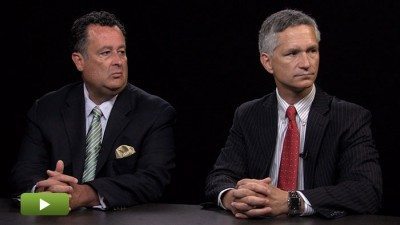When Close-Ended RE Fund Managers Open Up
Open-ended real estate funds are popular with investors looking for liquidity, but they require a unique skill set from their close-ended peers.
Open-ended real estate funds, where investors can claim redemptions on a quarterly basis, have technically been around since the 1970s. But the lack of reliable valuations and inconsistent performance left only a handful operated by major financial groups standing when the dust settled.
Then, approximately 10 years ago, they reappeared as investors clamored for more liquidity, only to collide with the global financial crisis. As the market recovered, so did investor appetite. And plenty of managers running close-ended funds had a newfound appreciation for their steady income. Better yet, they could tap their current expertise to launch them.

Many firms found that their close-ended investors were hungry for them to launch an open-ended vehicle. “Investors are looking for products that offer solid income, as well as lower volatility,” says Merrill. “With that in mind, an open-end fund in our asset classes could offer a differentiated product that did not exist in the market.”
Open-ended funds tend to be more cyclical, so when paired with close–ended offerings, it can create an attractive diversification. Some investors will participate in both varieties with the same team. But that team does need a different set of talents to manage open-ended funds well.
“In ways, it’s more like running a publicly listed company,” says Hugh Macdonnell, a managing director and head of client capital management at Clarion Partners, a firm with a rare 30 cumulative years’ experience managing open-ended RE funds. He explains that the balance sheet issues and shareholder communication more closely resemble those of a publicly listed entity.
For example, valuations are generally conducted on a quarterly basis with the use of third-party valuation firms. “A standardized valuation process in the open-end fund industry has inspired confidence in valuations; this has been one of key factors in the success of this generation of open-end fund vehicles,” says Macdonnell. “It gives real integrity to the NAV.”

However, Macdonnell notes that, unlike a public company, an open-ended fund’s treasury is responsible for providing redemptions; they are not usually traded between investors. Before the close of a quarter investors will request redemptions, and typically at the end of the following quarter the fund’s treasury will pay those out.
Then there’s the matter of managing capital inflows on a quarterly basis, as well.
Some funds receive capital commitments quarterly, some even monthly. And investors can wait until the end of that quarter or period to formally commit that capital, making it hard to gauge a final tally. So long as their documentation is in order, many firms will take that commitment on the last day of the period.
As unpredictable as capital inflows can be, the firms we spoke with are rigorous in gauging how much capital to target. Some only take in capital once a year, some set a target every quarter and some will put large amounts of capital in queues until they have opportunities to match it.
“Given our asset classes are smaller in nature and harder to access, it is important that we manage the amount of capital we raise so as not to alter our investment thesis,” says Merrill. Naturally, capital outflows can be even trickier to manage.
“Open-end funds are constantly buying and selling assets, so while real estate is generally an illiquid asset class, there are consistent opportunities to refresh our treasury,” says Macdonnell. In some cases, like in the wake of the financial crisis, managers will put gates up on capital outflows to avoid selling off a portfolio at a loss.

“You do have to communicate with investors about the integrity of liquidity events,” says Ryan Krauch, a principal at Mesa West Capital, which manages an open-ended mortgage debt vehicle, in addition to close-ended funds. As a debt fund, Mesa West uses loan repayments to meet redemptions. Market participants stress that no investor wants managers timing sales to liquidity events. Instead, it’s important for managers to explain how they’ll avoid the practice.
As popular as open-ended funds may be currently, most firms continue to their close–ended vehicles in order to offer different varieties of liquidity and risk profiles. The real test of their popularity will be when the broader market slows down and gates go up on redemptions, since there’s little difference between a closed fund and a “gated” one.
Open-ended real estate funds are popular with investors looking for liquidity, but experts say they require a unique skill set from their close-ended peers.








